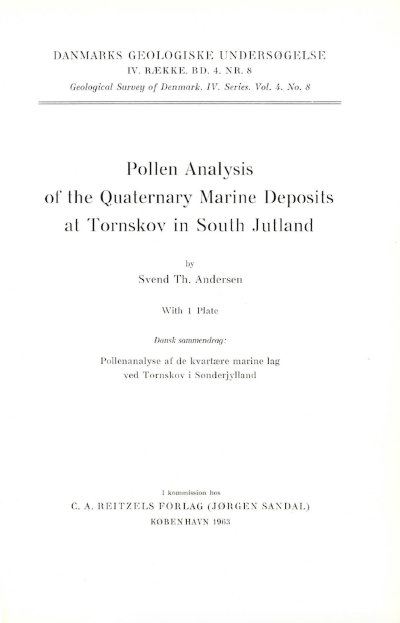Pollen Analysis of the Quaternary Marine Deposits at Tornskov in South Jutland
DOI:
https://doi.org/10.34194/raekke4.v4.7004Abstract
At Tornskov 4 km north of Løgumkloster, south Jutland, a Quaternary marine deposit was found at 27-95 m below the surface. The marine deposit is covered by glacial deposits, which contain a dislocated fragment of the marine deposit. Tertiary deposits occur below 107 m. The deposits were investigated with pollen analysis. Re-deposited pollen is very frequent below 77 m. The layers at 27-77 m correspond to a major part of an interglacial succession beginning with Betula-Pinus dominance, and continuing with Alnus-Pinus dominance. Picea, Quercus, Ulmus, Carpinus, Abies, Corylus, Taxus and other trees and shrubs are represented with rather low frequencies. The interglacial marine deposit at Tornskov is contemporaneous with the interglacial marine deposit at Inder Bjergum near Ribe, and with deposits of the interglacial Holstein Sea in north Germany and the northern Netherlands, in which there is a similar vegetational development. Pollen diagrams typical of the Holsteinian Interglacial are also known from fresh-water deposits in north Germany, the Netherlands and Poland. The interglacial fresh-water deposits at Harreskov, Starup and Ølgod in western Jutland belong to another, presumably older interglacial stage.
Downloads
Published
Issue
Section
License
This article is distributed under a CC-BY 4.0 licence, permitting free redistribution and reproduction for any purpose, even commercial, provided proper citation of the original work. Author(s) retain copyright over the article contents.


